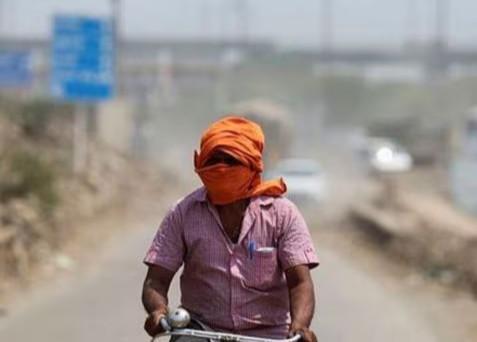
Extreme Heat Endangering Health & Productivity of Workers: Report
As the world grapples with the escalating effects of climate change, a recent report by the World Health Organisation (WHO) and the World Meteorological Organisation (WMO) has highlighted the alarming impact of extreme heat on the health and productivity of workers.
According to the report, worker productivity drops by 2-3% for every degree above 20°C. This may seem like a small percentage, but it has significant implications on the overall performance and efficiency of industries, economies, and societies as a whole.
Manual workers in the agriculture and construction sectors, as well as vulnerable populations like children and the elderly in developing countries, are particularly at risk. These individuals are often exposed to extreme heat for extended periods, making them more susceptible to heat-related illnesses and injuries.
The report emphasized the need for urgent action to mitigate the effects of heat stress, which can have devastating consequences on individuals, communities, and economies. Heat stress can lead to a range of health risks, including heatstroke, dehydration, and kidney dysfunction. In severe cases, it can even prove fatal.
Heatstroke, a life-threatening condition, occurs when the body’s temperature regulation system is overwhelmed by heat. Symptoms include high body temperature, confusion, altered mental state, and even coma. Dehydration, another common heat-related illness, occurs when the body loses more fluids than it can absorb, leading to symptoms such as dizziness, headaches, and fatigue.
Manual workers in agriculture and construction sectors are particularly vulnerable to heat stress due to their physically demanding jobs and limited access to cooling measures. In these industries, workers often face challenging working conditions, including long hours of physical labor, inadequate breaks, and limited access to shade and water.
In addition to the health risks, heat stress can also have significant economic and social implications. For instance, heat-related illnesses can lead to lost productivity, absenteeism, and turnover, resulting in significant economic losses for industries and economies.
Developing countries, where many manual workers are employed, are disproportionately affected by heat stress. In these countries, the lack of resources, infrastructure, and social support systems makes it even more challenging to address the issue.
The report emphasized the need for a multi-faceted approach to address the impact of heat stress on workers. This includes providing cooling measures, such as air-conditioned workspaces, shade, and hydration stations, as well as promoting heat-acclimatization programs and providing personal protective equipment.
Moreover, the report highlighted the importance of education and awareness campaigns to inform workers, employers, and policymakers about the risks and consequences of heat stress. This includes providing training on heat stress prevention, recognition, and response, as well as promoting heat-safe work practices and policies.
The WHO and WMO are urging governments, employers, and individuals to take immediate action to address the issue. This includes implementing heat-related policies and regulations, investing in heat stress prevention and mitigation measures, and promoting heat-safe work practices.
In conclusion, the report by the WHO and WMO highlights the urgent need for action to address the impact of extreme heat on the health and productivity of workers. The consequences of inaction can be devastating, including lost productivity, absenteeism, and turnover, as well as significant economic and social implications.
As the world continues to grapple with the effects of climate change, it is essential that we prioritize the health and well-being of workers, particularly those in vulnerable populations. By implementing heat-related policies and regulations, investing in heat stress prevention and mitigation measures, and promoting heat-safe work practices, we can reduce the risks and consequences of heat stress and ensure a healthier, more productive, and more resilient workforce.
Source: https://repository.inshorts.com/articles/en/PTI/45d9bd2d-ff57-417c-9e5f-831344bb34b0






